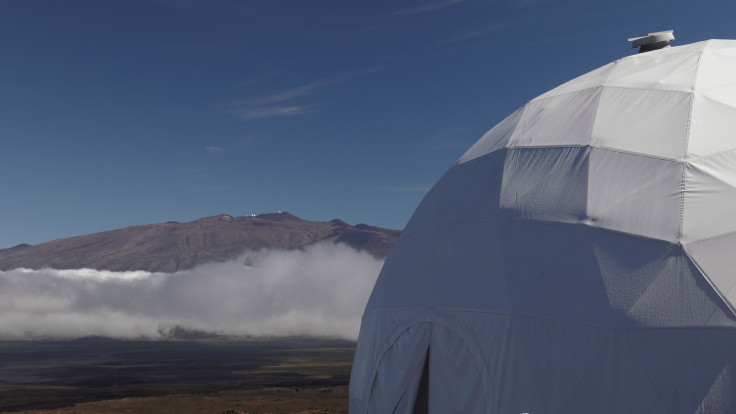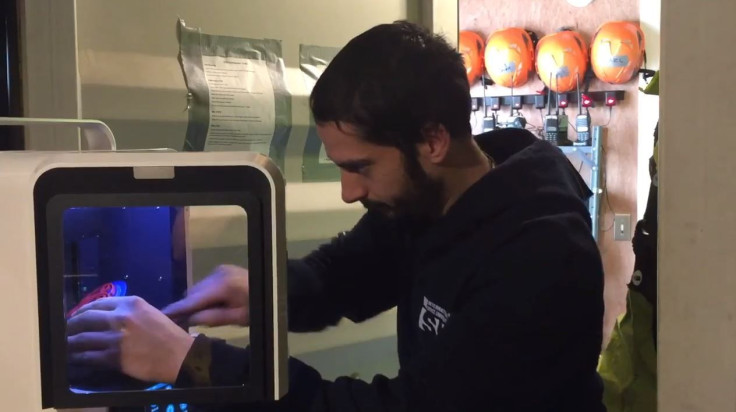NASA Mission To Mars: Crew Simulates Isolated Colony In Volcano Dome

Brian Ramos spent eight months in isolation to simulate life in an outpost on Mars, sharing a small habitat with five other people and without the internet. But he would go right back inside for some more quality time.
“I really felt I could have stayed in there, I kind of wanted to stay in there,” he told International Business Times this week, shortly after exiting the Martian simulation at Hawaii’s Mauna Loa volcano. “I would absolutely go [back] in with my same crew, without question.”
Ramos, who is trained in biomedical and electrical engineering, was part of the latest in a string of isolation experiments that are geared toward preparing NASA for long-term space travel. The civilians in the habitat of the Hawaii Space Exploration Analog and Simulation, also known as HI-SEAS, work together on research projects and on household tasks like making dinner under conditions as close to being on the Martian surface as possible, complete with an airlock the team has to use to leave the habitat and venture onto the reddish slope of Mauna Loa. The isolation experiments look into how people work together in these situations and could provide information for NASA on what kinds of personalities are suitable for long space journeys and how they can keep the peace between crewmates once the space agency starts sending people to Mars.
“The University of Hawaii is going to be giving NASA essential information about how you pick individual astronauts and how you put them together in a crew, but also how you support them over these long-duration missions,” HI-SEAS principal investigator Kim Binsted said in a video from the university, another partner on the isolation experiment.
The team emerged from their habitat on Sept. 17.

During the past eight months, Ramos said, he and his team focused on communicating and being open with one another — a strategy that works on Earth as well as it would work on Mars.
“Any time you put six people in a closed environment you’re gonna have disagreements,” he told IBT. “We were really good about bringing up issues as they came up.”
The conditions of the experiment pushed the team together because the habitat was small and contact with the outside world was far away. Ramos explained that to simulate what it would be like for astronauts on Mars to communicate with Earth, there was a 20-minute communication delay. That means if the team needed assistance, their message out would take 20 minutes to reach the control room and a response would take the same amount of time to get to their habitat.
“At the very least it’s going to be 40 minutes … added onto your problem,” he explained.
While the members could use email, they didn’t have “live internet” — searching Google, Skyping with their family and checking social media were all out of the question.
For Ramos, that was a bit of an asset: “There’s a lot of noise that’s kind of reduced. … Being away from the traffic and the busyness of the world, there was something really good about that.”
While they were away from that hustle and bustle, the team members worked on various research projects, both individually and as a group. They also grew vegetables like carrots, radishes and tomatoes, as well as herbs like parsley and oregano.
“We’re simulating a crew on Mars, right?” the crew’s commander, James Bevington, said. “So we also did things that would be relevant, things that you would expect a crew on Mars to do.”

But when they weren’t focusing on science, they were still together.
“Over the course of eight months your entire world are these five people and everything you do together,” Ramos said. “You can’t separate work and personal life. … How do you balance work and personal life in a scenario where they are the same thing?”
To help with the team isolation, he said, the crew started a “coffee shop” — an area by the windows looking out onto the lava fields where they could have quiet time and reflect.
Although Ramos called the experiment “an extremely fulfilling experience,” he was looking forward to exploring Hawaii — “I’ve been living in Hawaii for eight months and I’ve seen none of it” — and to visiting his little brothers and his nephew.
The habitat may be behind them, but the crew members’ isolation experiment has pushed space travel and a mission to Mars another step forward.
“We need to send humans out because it’s important for the future of the species,” crew science officer Samuel Payler said. “I think it’s really important to get off Earth. If you look back at the geological record, it is just full of mass extinctions.”
© Copyright IBTimes 2024. All rights reserved.





















